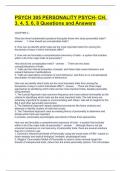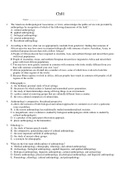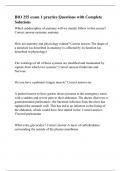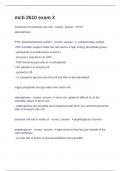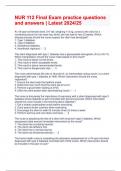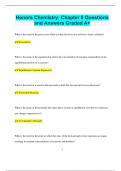Examen
PSYCH 305 PERSONALITY PSYCH- CH. 3, 4, 5, 6, 8 Questions and Answers
- Cours
- Établissement
PSYCH 305 PERSONALITY PSYCH- CH. 3, 4, 5, 6, 8 Questions and Answers What are three fundamental questions that guide those who study personality traits? 1. How should we conceptualize traits? 2. How can we identify which traits are the most important traits from among the thousands of ways i...
[Montrer plus]
